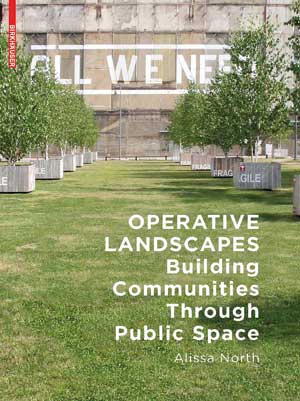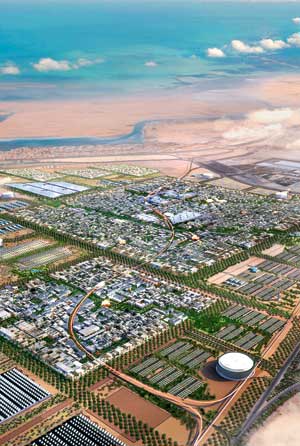
image | credit _ see http://dirt.asla.org/2013/01/09/landscapes-can-be-open-ended/
Operative Landscapes
Alissa North, Assistant Professor, University of Toronto
John H. Daniels Faculty of Architecture, Landscape, and Design
EN_ Operative Landscapes, a print publication, examines how public space influences the structure, success, and continual evolution of communities. There are infinite ways to build a community, yet the defining feature of any community is characteristically the landscape. Whether it is a park, a river corridor, community gardens, a plaza, or a streetscape, the public spaces where people interact provide a shared sense of ownership, and the qualities of these spaces influence how a community evolves. A well designed open space fosters strong community pride and involvement, inviting improvement of existing structures or additional quality spaces. In this sense, community landscapes are considered operative in that they perform functionally in the constructive development of the community. Based on 37 globally exemplary projects, where well designed landscape spaces have played an integral role in the development of the community, the intent of this publication, under contract with Birkhäuser, is to demonstrate and understand how public space design positively impacts the community at each stage of the design process. Featured within the range of projects are Canadian examples, with the explicit intent to demonstrate the high quality landscape architectural works produced in Canada, as situated within a global context.

image | credit _ see http://dirt.asla.org/2013/01/09/landscapes-can-be-open-ended/
Paysages opérationnels
FR_ Le livre, paysages opérationnels, examine comment l'espace public influence la structure, le développement, et l'évolution continue des communautés. Il y a de nombreuses manières d'établir une communauté, pourtant le dispositif de définition de n'importe quelle communauté est caractéristiquement le paysage. Que ce soit un parc, une bordure de fleuve, des jardins communautaires, une place publique, ou une rue, les espaces publics fournissent un sens partagé de propriété, et les qualités de ces espaces déterminent comment une communauté évolue. Un espace ouvert bien projeté stimule le sens de fierté d’une communauté ainsi que la participation des membres cette communauté, l’amélioration des structures existantes ou la création de nouveaux espaces qualité. Dans ce sens, les paysages communautaires sont considérés comme opérationnels quand ils participent de manière fonctionnelle au développement d’une communauté. Basé sur 37 projets exemplaires à travers le monde, où les espaces paysagés ont joué un rôle intégral dans le développement communautaire, l'intention de cette publication, sous contrat avec Birkhäuser, est de démontrer et de comprendre comment la création d’un espace public impacte sa communauté à chaque étape du processus de conception. Parmi les projets décrits, des exemples canadiens ont été choisis, avec l'intention explicite de démontrer que des projets paysagés de qualité sont produits au Canada, au même rang que d’aitres projets a l’échelle globale.
